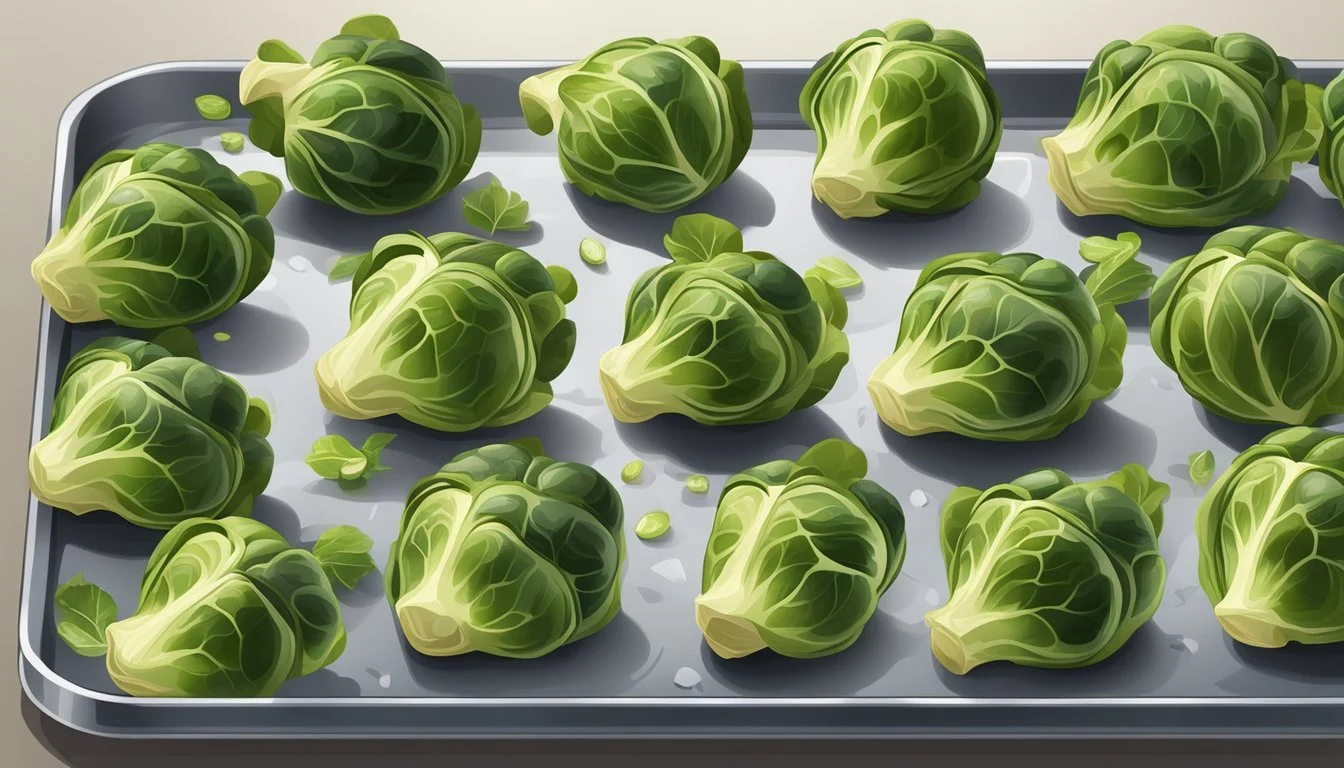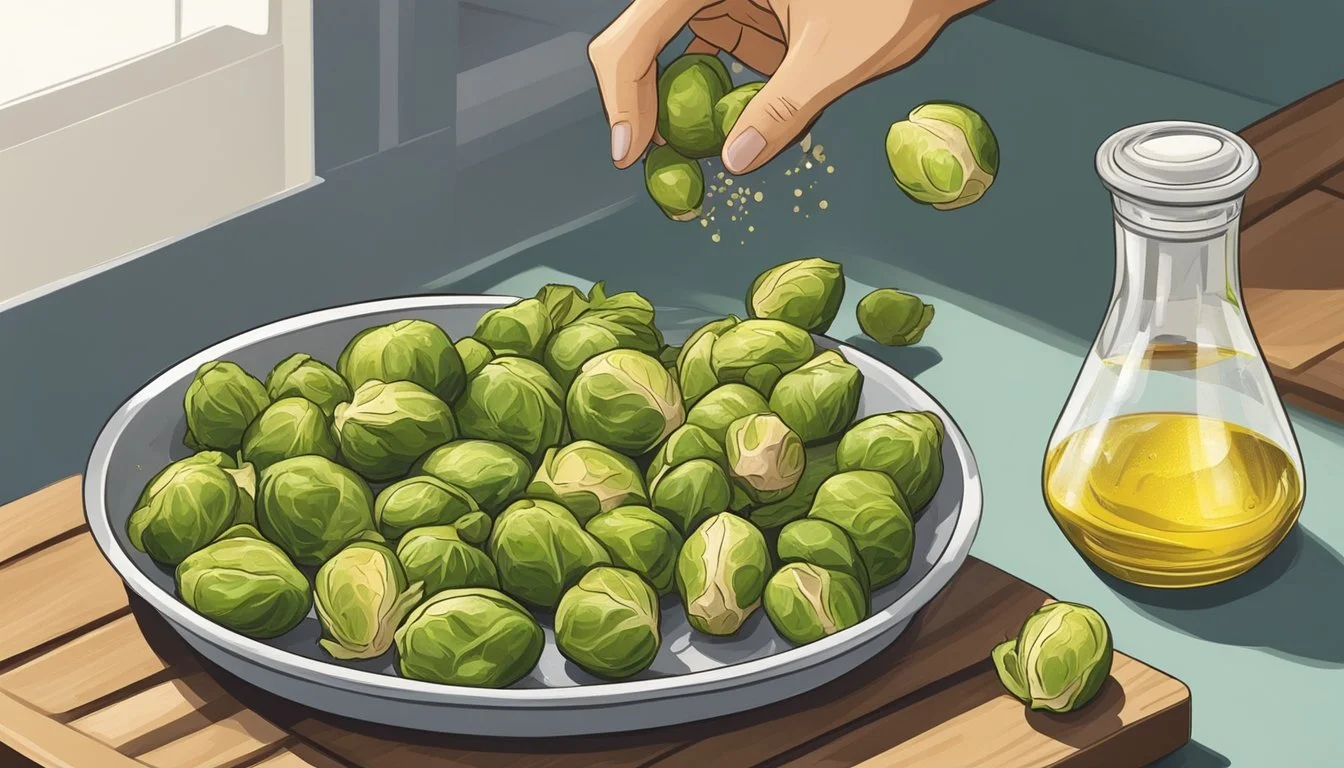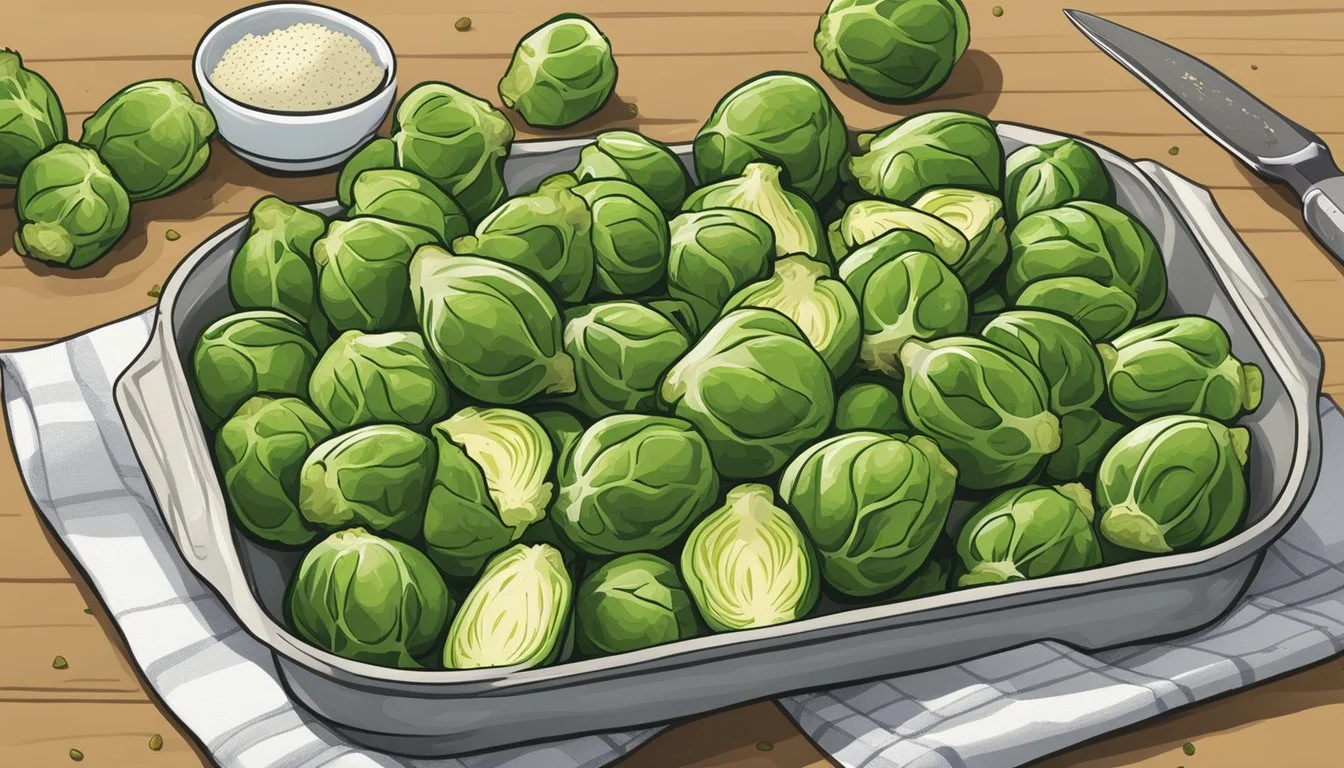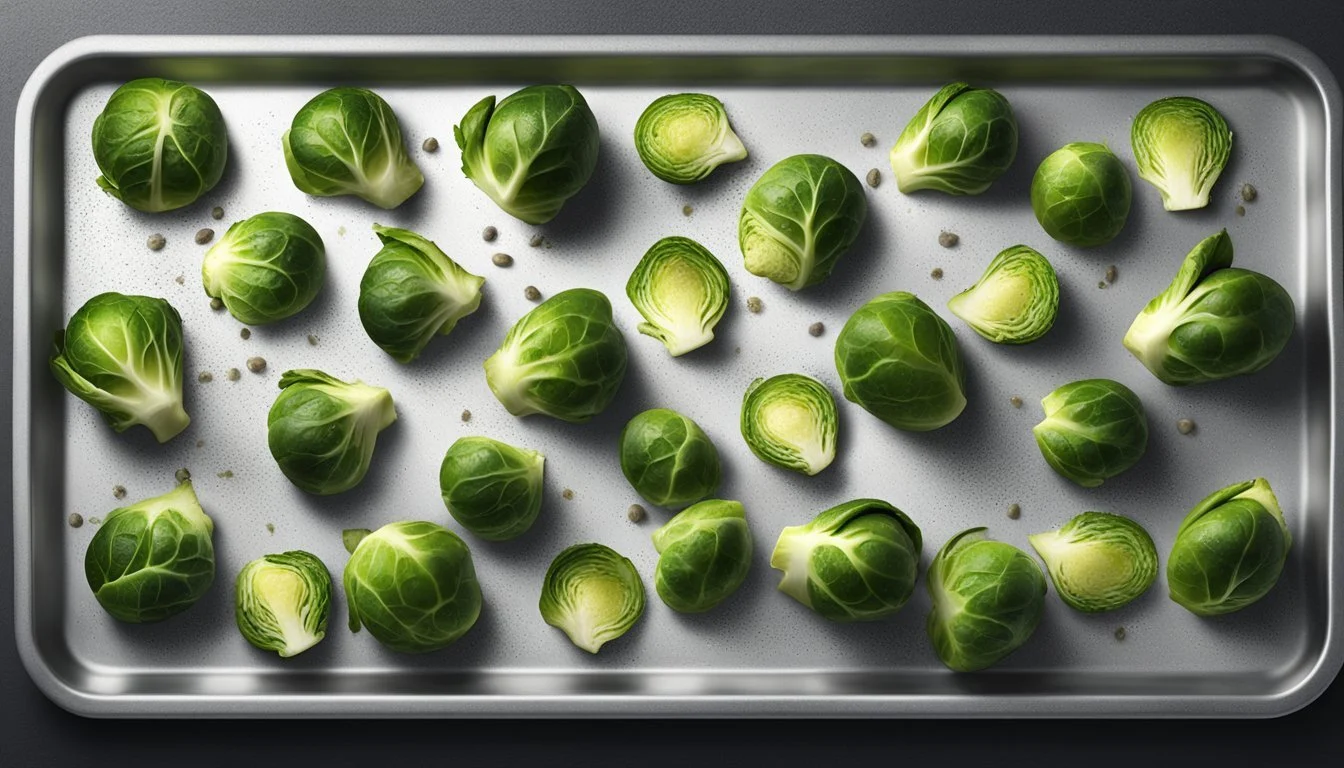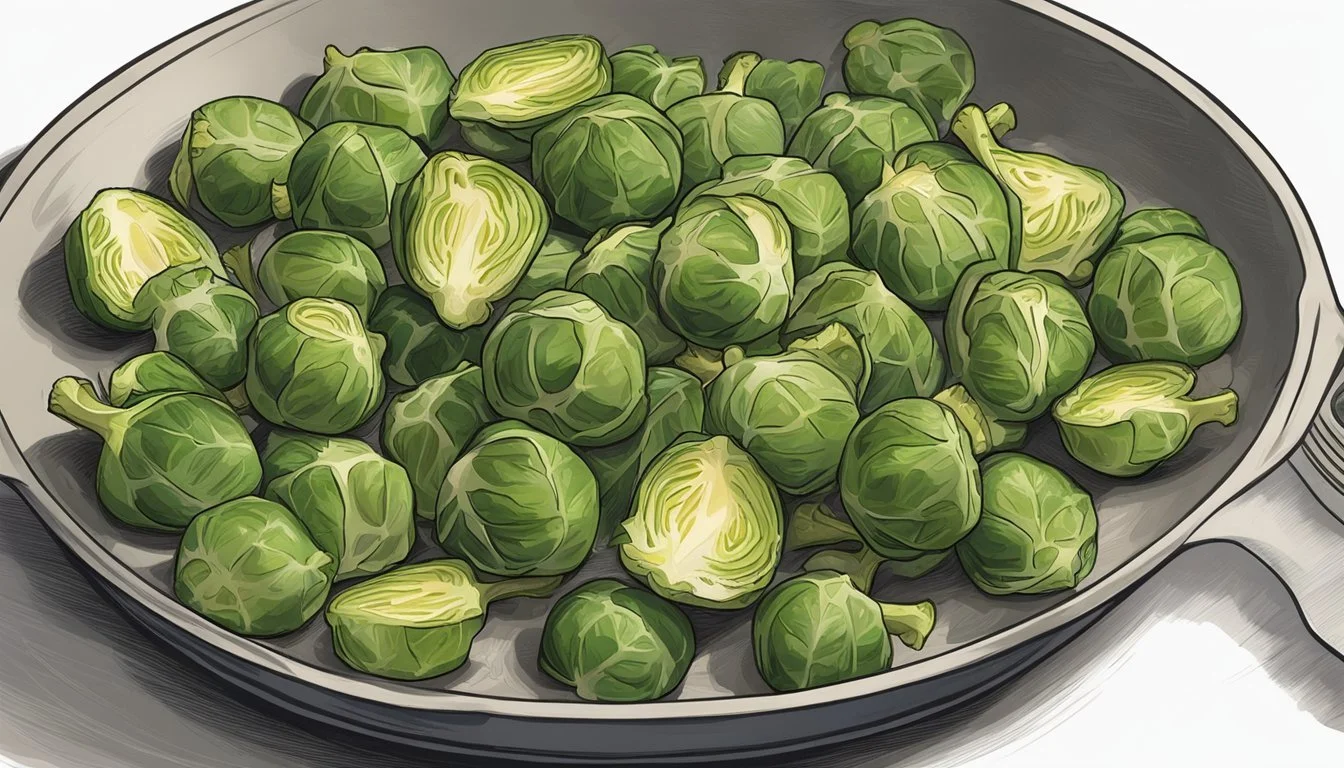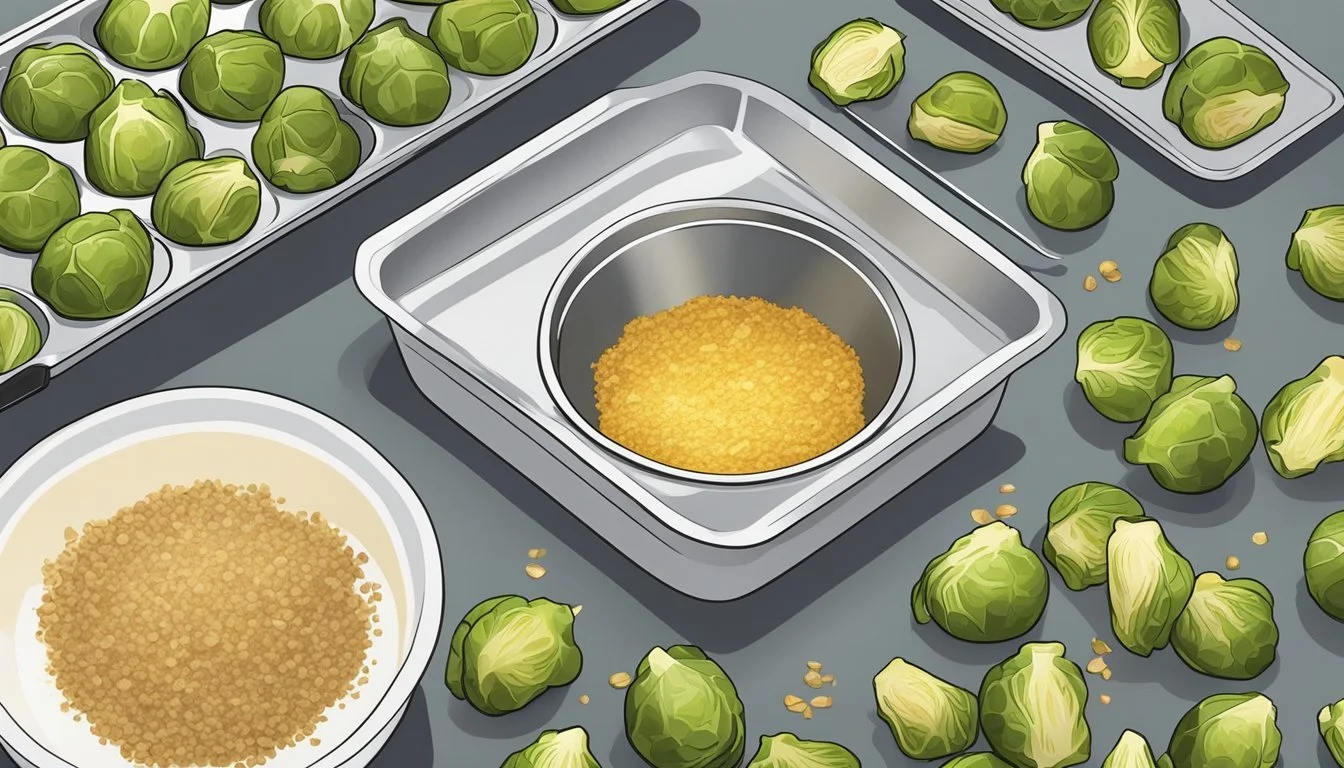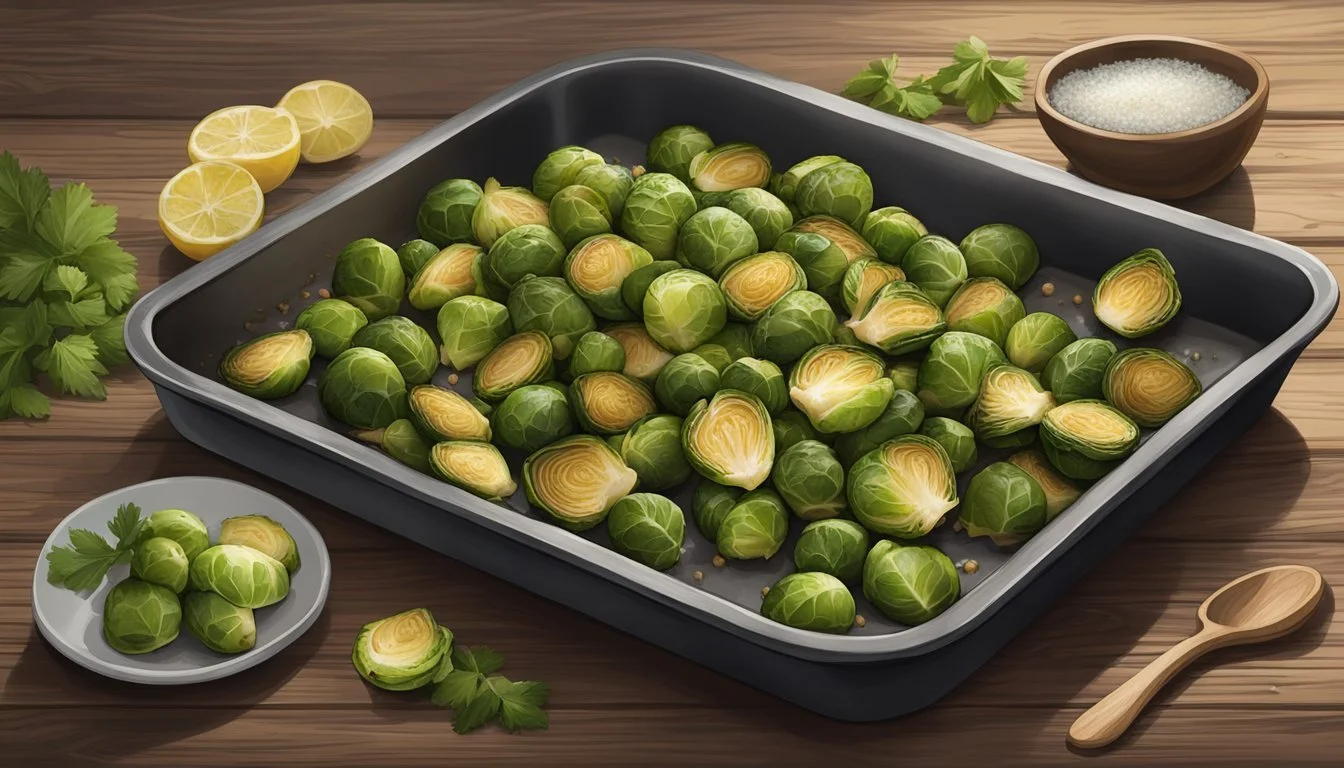How to Reheat Gluten-Free Roasted Brussels Sprouts
Quick and Simple Tips
Properly reheating gluten-free roasted Brussels sprouts ensures they remain crispy and retain their rich flavor. To achieve this, spread the leftover Brussels sprouts in a single layer on a baking sheet and heat them in a preheated oven at 350°F for about 10 to 12 minutes. This technique will bring back the delightful crunch and taste, making them just as delicious as when freshly cooked.
For those with an air fryer, Brussels sprouts can be reheated quickly and efficiently. Adjust the time based on the portion size: smaller amounts take 3-5 minutes, while larger servings may require up to 10 minutes. This method offers a convenient and effective way to enjoy your favorite gluten-free vegetable dish.
If you prefer stovetop reheating, simply use a skillet over medium-high heat with a little oil. Stirring occasionally will help maintain an even reheat, giving your Brussels sprouts a nicely crisp exterior. This versatile vegetable can be brought back to life with these simple techniques, ensuring a delicious and satisfying meal every time.
Benefits of Eating Brussels Sprouts
Brussels sprouts are a rich source of essential nutrients, making them a healthy addition to any diet.
They are packed with vitamin C, which supports the immune system and helps the body absorb iron from other foods.
These cruciferous vegetables also contain a good amount of fiber, promoting digestive health and keeping you feeling full longer.
Brussels sprouts provide a moderate amount of protein, which is essential for muscle repair and growth.
Consuming Brussels sprouts can help meet daily nutritional needs efficiently due to their wide range of nutrients.
Including Brussels sprouts in meals is a simple way to boost overall health.
Selecting the Best Brussels Sprouts
When selecting Brussels sprouts, look for fresh and firm vegetables. Fresh Brussels sprouts typically have a bright green color and feel firm to the touch.
Choose sprouts that are uniform in size to ensure even cooking. Smaller sprouts are often more tender and sweet, while larger ones can be more bitter.
Tips for Selecting Fresh Brussels Sprouts
Color: Opt for bright green leaves.
Texture: Firm and compact with tightly packed leaves.
Size: Uniform size for consistent cooking.
Avoid Brussels sprouts with yellowing leaves or black spots, as these are signs of aging. Also, loose or falling-off leaves can indicate older produce.
If purchasing on the stalk, the sprouts should still be firm and should not easily fall off the stalk. Freshness is key in maintaining flavor and texture.
Storage
After purchasing, store Brussels sprouts in a breathable bag in the refrigerator. Keep them unwashed until ready to use, as moisture can lead to spoilage. For the best quality, use within a few days of purchase.
Remember, the quality of your ingredients plays a significant role in the final dish. Fresh Brussels sprouts make for a better reheating experience, maintaining their delicious flavor and essential nutrients.
Essential Ingredients for Roasting
The success of perfectly roasted, gluten-free Brussels sprouts hinges on a few key ingredients. These include selecting the right oil, proper seasoning, and using additional flavor boosters.
Choosing the Right Oil
The type of oil used greatly affects the texture and flavor of roasted Brussels sprouts. Olive oil is a popular choice due to its rich flavor and high smoke point, making it suitable for roasting at high temperatures. Extra-virgin olive oil adds a deeper taste, though regular olive oil works just as well.
Other oil options include avocado oil and grapeseed oil, both of which have high smoke points and neutral flavors. They allow the natural taste of Brussels sprouts to shine. It's important to ensure that the oil coats each sprout evenly to achieve the desired crispiness.
Seasoning for Flavor Enhancement
Seasoning is fundamental in elevating the taste of Brussels sprouts. Basic seasonings like salt and pepper are essential. Sea salt can add a subtle crunch and a cleaner taste compared to table salt.
For a more robust flavor, consider adding garlic—either minced fresh or in powdered form. Garlic infuses the Brussels sprouts with a savory depth that complements their natural bitterness. Additionally, finely chopped herbs such as thyme or rosemary can introduce aromatic elements.
Combining these with a bit of brown sugar or honey can balance out the stronger, more astringent flavors, resulting in a well-rounded taste.
Additional Flavor Boosters
In addition to basic seasoning, additional flavor enhancers can make a significant difference. Balsamic vinegar is a common addition, providing a tangy sweetness that caramelizes during roasting. A drizzle of honey or a sprinkle of brown sugar can add a layer of sweetness that contrasts with the sprouts' bitterness.
Combining olive oil with a splash of balsamic vinegar creates a delightful glaze. Tossing the Brussels sprouts with sautéed onions or a few bacon pieces before roasting can enrich the dish's flavor profile. Incorporating these ingredients takes roasted Brussels sprouts from simple to savory and memorable.
Preparation Before Roasting
For gluten-free roasted Brussels sprouts, it’s essential to properly preheat the oven and adequately prepare the Brussels sprouts to ensure they cook evenly and achieve the desired crispiness.
Preheating the Oven
Start by preheating the oven to the recommended temperature in your recipe, typically 400 degrees F. This step ensures your Brussels sprouts begin cooking immediately and allows them to caramelize properly. Use an oven thermometer to verify the actual temperature if accuracy is crucial.
Prepare a baking sheet by lining it with parchment paper to prevent sticking and make cleanup easier. This can also help distribute heat more evenly, reducing the risk of burnt spots.
Prepping the Brussels Sprouts
Begin by trimming the base of each Brussels sprout and removing any yellow or damaged outer leaves. Rinse them thoroughly under cold water to remove any dirt or debris. Pat them dry with paper towels to ensure they roast instead of steam.
Next, cut each Brussels sprout in half to allow even cooking. Place them in a large mixing bowl. Drizzle with olive oil and season with salt and pepper for a simple yet flavorful base. Toss the Brussels sprouts to coat them evenly.
Arrange the Brussels sprouts cut side down on the baking sheet in a single layer. This promotes browning and a crispy texture. Ensure there is space between each sprout to allow heat to circulate efficiently.
Roasting Process Step by Step
Properly roasting Brussels sprouts involves careful arrangement and monitoring of time and temperature to achieve a crispy, delicious result.
Arranging Sprouts on the Sheet Pan
Start by preheating the oven to 400°F (200°C). Trim the ends of the Brussels sprouts and remove any yellow or loose outer leaves. Cut the sprouts in half to ensure even cooking.
Oil and seasoning: In a mixing bowl, toss the halved sprouts with olive oil, salt, and pepper. You can also add garlic powder for extra flavor.
Spread evenly: Arrange the sprouts cut-side down on a lined or greased sheet pan. Ensure there’s space between each sprout to allow hot air to circulate, promoting even roasting and crispiness.
Layering: Avoid overlapping or crowding to prevent steaming, which can make them soggy.
Determining Roasting Time and Temperature
The ideal oven temperature for roasting Brussels sprouts is 400°F (200°C). This temperature allows the sprouts to become crispy on the outside while remaining tender on the inside.
Cooking time: Roast the Brussels sprouts for 25-30 minutes. Check for doneness by penetrating with a fork; they should be tender yet firm, with a golden brown, crispy exterior.
Additional tips: For extra crispiness, consider giving the sprouts a quick sear in a hot, oven-safe pan before roasting. This can enhance the caramelization process.
Monitoring: Stir the sprouts halfway through the roasting process to ensure even browning. Keep an eye on them to prevent burning.
By following these steps, you can achieve perfectly roasted, crispy Brussels sprouts every time.
How to Reheat Roasted Brussels Sprouts Properly
Properly reheating roasted Brussels sprouts ensures they retain their crispiness and flavor. This section covers three primary methods: using the oven, air fryer, and stove.
Oven-based Reheating
For optimal crispiness, reheating in an oven is highly recommended. Start by preheating the oven to 375°F (190°C). Place the leftover Brussels sprouts on a baking sheet lined with parchment paper. If some are large, slice them in half to ensure even heating. Heat them for 10-15 minutes, checking periodically to avoid overcooking. This method ensures a crispy exterior and soft interior.
Using the Air Fryer for Reheating
An air fryer provides a quick and efficient way to bring reheated Brussels sprouts back to life. Preheat the air fryer to 350°F (175°C). Lay the Brussels sprouts in a single layer, avoiding overcrowding. Cook for around 5-7 minutes, shaking the basket halfway through to promote even cooking. This method is excellent for maintaining crispiness while saving time.
Reheating on the Stove
Using a frying pan is another effective method. Begin by heating a bit of olive oil in the pan over medium heat. Once hot, add the Brussels sprouts. Stir frequently to ensure they heat evenly without burning. This takes approximately 5-8 minutes. Adding an extra dash of seasoning can enhance the flavor, making the reheated sprouts taste freshly cooked.
Tips for Crispier Results
Preheat the Oven: Ensure the oven is adequately preheated to 350°F before placing the Brussels sprouts inside. This helps achieve a consistent crispy texture.
Use a Single Layer: Spread the roasted veggies in a single layer on the baking sheet. Overcrowding will trap steam, leading to soggy sprouts.
Elevate the Sprouts: Use a wire rack on the baking sheet. This allows hot air to circulate, making them crisper.
Opt for the Air Fryer: For even better results, use an air fryer. The rapid heating ensures a crispy exterior within minutes.
Light Oil Coating: Coat the Brussels sprouts lightly with oil before reheating. This prevents sticking and enhances crispiness.
Avoid Overcooking: Monitor the cooking time closely. In the oven, it typically takes 10-12 minutes; in the air fryer, it can take as little as 5 minutes.
Stir Halfway: Whether using an oven or air fryer, stir the sprouts halfway through the cooking process. This ensures even crispiness on all sides.
Temperature Considerations: High enough heat is crucial for crispiness but avoid too high temperatures as it may burn the outside too quickly.
By following these tips, you can ensure your reheated Brussels sprouts remain as crisp and delicious as when they were first roasted.
Creative Serving Suggestions
Gluten-free roasted Brussels sprouts can be a versatile component in various dishes. They pair well with proteins, enhance salads, and can be transformed with different dressings to create new culinary experiences.
Pairing with Proteins
Roasted Brussels sprouts work well as a side dish for various proteins. When paired with grilled chicken, the sprouts' crispy texture and earthy flavor provide a balanced contrast.
For a heartier meal, consider serving them alongside roasted salmon. The sprouts' nutty notes complement the rich flavor of the fish, creating a delicious and healthy dinner option.
Sprinkle with a bit of balsamic glaze or honey mustard to enhance the flavors further. These sauces add a touch of sweetness that pairs beautifully with both the protein and the roasted vegetables.
Integrating into Salads
Roasted Brussels sprouts can elevate many salads by adding both texture and flavor. One excellent option is incorporating them into a roasted vegetable salad. Combine them with other roasted vegetables like sweet potatoes, carrots, and beets.
For a more substantial meal, add quinoa and chickpeas, creating a high-protein, gluten-free salad.
They can also be mixed with mixed greens, nuts, and dried cranberries to create a seasonal salad. Topping with a light vinaigrette or a simple olive oil and lemon dressing adds a refreshing finish. This salad serves well as a main dish or a side dish.
Experimenting with Dressings
Varying dressings can turn basic roasted Brussels sprouts into a dynamic dish. Try drizzling sprouts with a balsamic glaze for a sweet-tangy bite. For a zestier approach, toss them with a lemon vinaigrette made from freshly squeezed lemon juice, olive oil, and a hint of garlic.
Honey mustard dressing can transform the sprouts into a unique, tangy treat. This combination is especially appealing when the sprouts are paired with grilled proteins or integrated into salads.
For a sophisticated touch, consider a truffle oil drizzle. The fragrant oil adds complexity and depth, making the sprouts an exquisite side dish suitable for upscale meals.
Proper Storage and Food Safety
To ensure the best flavor and texture of your reheated gluten-free roasted Brussels sprouts, proper storage and food safety practices are essential. This section covers storing leftovers in the refrigerator and freezing for long-term preservation.
Storing Leftovers
Leftover roasted Brussels sprouts should be stored promptly to maintain their quality and minimize food safety risks. Place them in an airtight container within two hours of cooking. Refrigerate immediately to keep them fresh. They can stay in the refrigerator for up to 4 days.
When reheating, ensure that the sprouts reach an internal temperature of 165°F. This step will help kill any bacteria that might have developed. Avoid keeping the leftovers at room temperature for too long to prevent spoilage.
Freezing for Long-term Preservation
For long-term storage, freezing is an excellent option. Allow the Brussels sprouts to cool completely before placing them in an airtight container or freezer bag. For best results, remove as much air as possible to prevent freezer burn. Label the container with the date so you can track how long they've been stored.
Frozen Brussels sprouts can maintain their quality for up to three months. When ready to serve, reheat them directly from the frozen state. This method will help maintain their texture and flavor. Make sure they are reheated thoroughly until hot all the way through.
Health Considerations and Dietary Adjustments
When reheating gluten-free roasted Brussels sprouts, consider the nutritional content and ensure options are available for various dietary preferences such as gluten-free and vegan diets.
Caloric and Macronutrient Breakdown
Brussels sprouts are a nutritious choice, low in calories and rich in essential nutrients. They contain about 38 calories per 100-gram serving and offer a balanced macronutrient profile:
Carbohydrates: Approximately 8 grams, providing a good source of dietary fiber.
Proteins: Around 3 grams, contributing to muscle repair and growth.
Fats: Less than 1 gram, primarily unsaturated, benefiting heart health.
They are also low in saturated fats and free from trans fats and cholesterol, making them a heart-friendly vegetable. Reheating them properly ensures these nutritional benefits are retained, and any added ingredients such as oils or seasonings should be considered for their calorie and fat content.
Gluten-Free and Vegan Options
For those following a gluten-free diet, ensure that any seasonings or sauces used during the reheating process are certified gluten-free. Some spices and prepared sauces might contain gluten as an additive, so it's crucial to read labels.
Vegan options are also easy to maintain when reheating Brussels sprouts. Since they are plant-based, ensuring that any added ingredients, such as oils or flavorings, are vegan-friendly is essential. Use oils like olive or coconut oil and avoid butter or any animal-derived seasonings.
By paying close attention to these considerations, Brussels sprouts can fit well into a variety of dietary plans, making them a versatile and healthy option for many.
Adapting the Recipe for Special Occasions
Reheating gluten-free roasted Brussels sprouts for special occasions can elevate your meal and save time. Tailoring them for holiday dinners or casual gatherings involves focusing on presentation, seasoning, and pairing with complementary dishes.
Thanksgiving and Christmas
For Thanksgiving and Christmas, roasted Brussels sprouts can be enhanced with festive flavors. After reheating, consider adding a drizzle of balsamic glaze or a sprinkle of dried cranberries and toasted pecans. These ingredients offer a sweet and savory contrast that works well with traditional holiday meats like turkey and ham.
The presentation can also be refined by serving the reheated Brussels sprouts in a beautiful ceramic dish. Garnishing with fresh herbs such as rosemary or thyme adds a touch of elegance. Remember to serve these alongside other holiday favorites like mashed potatoes and stuffing, ensuring a complete and satisfying holiday spread.
Casual Dinners and Gatherings
For casual dinners and gatherings, simplicity is key. Reheat the Brussels sprouts and toss them with garlic powder, salt, and pepper for a well-loved flavor profile. Adding bacon pieces, reheated to perfect crispness, can add a delightful crunch and rich taste.
Serve the Brussels sprouts in a large bowl, easily accessible for guests to help themselves. Pair with other casual sides like roasted potatoes or a fresh green salad. For added convenience, consider reheating the Brussels sprouts directly on a sheet pan in the oven to save on dishes and prep time. This approach ensures a stress-free and enjoyable dining experience.

